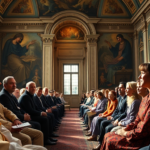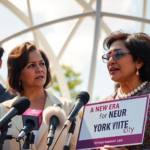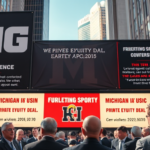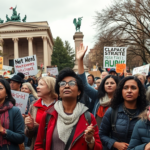Artistic Diversity in Focus: How New Orleans Museums Stand Out
In a landscape where diversity among artists in major U.S. museums remains critically low, a recent analysis highlights how museums in New Orleans could be setting an example for others. A study published by the Public Library of Science reveals concerning statistics about the art world: 85% of artists in prominent museums are men, and 87% are white. These figures accentuate the prevalent gender and racial imbalances in museum collections across the country. However, as local institutions like the New Orleans Museum of Art (NOMA) and Tulane University’s Newcomb Art Museum (NAM) demonstrate, there appears to be a conscientious effort in New Orleans to counteract this trend.
Local Museums’ Efforts to Champion Diversity
Examining how New Orleans museums measure up against these dismal national statistics reveals some promising strides within the community. According to their online databases, both NOMA and NAM have showcased relatively higher gender diversity among their artists. NOMA’s records indicate a count of 72 female artists compared to 43 male artists, while NAM hosts 19 female artists versus eight male artists, emphasizing an opposite trend to the nationwide figures.
While these numbers show progress in gender representation, the story of racial diversity is somewhat different. NAM, although varied in exhibitions featuring international and diverse artists, still reflects racial disparities. Of their 115-artist sample, NAM presents 23 Black artists and 15 Native American artists, yet Hispanic and Asian artists make up only 7% of their collection. NOMA, in its current offerings, lists Black artists as the sole minority group online, a snapshot that could mask the true breadth of its collection.
Community Impact and Barriers to Overcoming Disparities
The impact of these local efforts extends into the New Orleans community, fostering cultural inclusivity and representation. However, barriers, such as systemic racism, limited arts programs, and a dearth of strong professional networks for minority artists, persist. For artists in the New Orleans area, these challenges often inhibit opportunities for recognition and display within well-regarded institutions.
Supporting minority artists with needed resources and involving them in decision-making processes is seen as a key solution. NAM has been highlighted for its proactive stance, focusing on cultural authenticity and engagement by inviting Native American artists to narrate their stories and featuring international artists to broaden perspectives.
Persistent Challenges and Future Directions
Despite these efforts, the journey towards equal representation in museums is far from over. Historic barriers continually shape which artists receive exposure and acclaim, implying the necessity for long-term strategies and reforms. Encouragingly, displays at institutions like NAM suggest that community co-curation and contextual labeling can lead to a more inclusive environment, breaking the barriers of traditional gatekeeping often seen in museum acquisitions.
Sandra Robertson, a local art historian and lecturer, suggests that such initiatives might be pioneered by museums across the country. “What museums in New Orleans are doing could honestly be revolutionary if adopted on a wider scale. It’s about building visibility and giving a platform, not just a space, for diverse voices,” she commented.
Relevance and Opportunities for New Orleans Residents
For New Orleans residents, especially emerging and minority artists, these developments hold particular significance. They present not just artistic opportunities but also a shift towards a more inclusive cultural dialogue that recognizes the diversity intrinsic to the city’s identity. These efforts could open doors for more underrepresented artists to display their work, gain recognition, and potentially impact the larger art scene.
Local residents interested in supporting these initiatives might engage with museums by providing feedback, attending diversity-centered exhibitions, or contributing through donations that aid in amplifying these efforts. Furthermore, The Tulane Hullabaloo, a leading voice in local journalism, continues to highlight these critical issues, welcoming donations and community involvement to continue their coverage.
Future Implications for the Community
The ongoing efforts in New Orleans may serve as a precursor to broader systemic changes in the art world. Should these practices be effectively documented and shared, they could inspire similar changes in museums nationwide, promoting a shift from longstanding exclusionary practices to ones that value and reflect diverse artistic expressions.
For experts like Dr. Emily Harris, an art diversity scholar, the future is promising if current momentum is sustained. “We’re witnessing the early stages of what could be a significant evolution in how art is curated and appreciated. It’s crucial for communities to hold their museums accountable and strive for collections that reflect the world’s rich diversity,” she suggests.
By fostering inclusiveness, New Orleans museums are not only enhancing local cultural landscapes but also setting standards for national and possibly international museums, affirming the city’s reputation as a vibrant cultural hub. Residents can stay informed about developments in this sphere through The Tulane Hullabaloo’s platforms, ensuring that community interest drives ongoing conversations around art and diversity.







